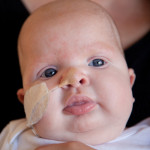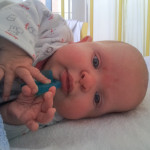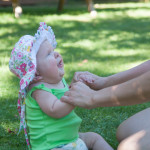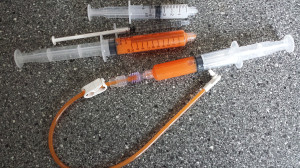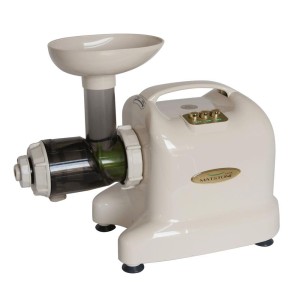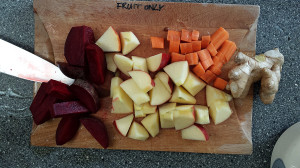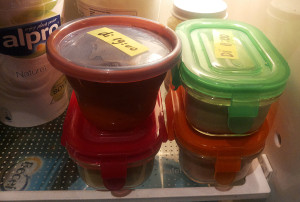As promised in our previous post, we would like to share some more of the positive things that have been going on in Vera’s development over the past couple of months.
Since March Vera has been on sleep medication. While this doesn’t mean our nights are completely smooth, they are certainly much better than they have been! It’s absolutely wonderful that we ourselves are much better rested. But we particularly notice a big difference in what this means for Vera and her quality of life. She now has the energy to learn. And Vera likes learning. At her therapeutic preschool (from Sophia Revalidatie) she gets praise for her eagerness to learn and for her perseverance.
And we realize once more how hard Vera has to work at things that may come natural to typical developing children. She has to work hard because she is a heart patient, her entire body works differently, has lower muscle tension, limited vision, different proportions and feet that are quite bent. But she is making strides in development.
In the past couple of months she has learned (with the help of the physical therapist) to get herself to a seated position from lying down. She can climb into her (low) chair by herself.
And she has a walker that she is getting more and more confident with as we practice going for small walks outside. Vera loves anything with wheels; she has her little red scooting car, a wonderful pink scoot bicycle, her blue walker and whenever she sees a pedal car or small bike, she is very keen on trying it out, even though she is often too short.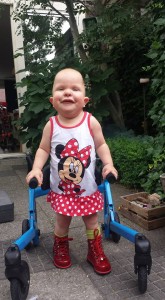
And Vera likes to walk without her walker as well. She can’t quite do it by herself yet, but is doing better and better while holding hands as well as along the table or wall. Her custom shoes are quite literally of great support in this. And she has discovered climbing! The small kitchen stepladder has become a playground, as well as the open staircase in our living room and small stoops in shops. The beauty of Vera is that she teaches us to celebrate what she CAN achieve. So we don’t focus on the extra effort we have to put in (paying more attention to where she is wandering about) but that we are happy for and with her when she accomplishes something new.
We also notice that while we can think of goals she should aim for, she certainly has her own agenda as well. We were trying to work on playing independently for longer periods of time for instance. But instead, Vera decided to put her energy into developing her motor skills further. And because she can now get to the places she wants to be more easily, her play has improved as well.
It may sound as though Vera is walking and biking and playing all day; but we do notice that her energy levels are definitely limited. We are noticing improvement in her energy levels over time, but it is still something we need to take into account when planning our day or week so she doesn’t get overloaded. Or overstimulated, such as being around large groups of people (at birthday parties, in shops, at church etc.) after which she kind of shuts down and often has a restless night. So we are still trying to find the balance between what we can and cannot do during a day or week. Oddly enough, we currently have to watch out we don’t overestimate what she can do because she has so much more energy than she used to…
And so a new goal we have come up with is: how can Vera have some down time between all these developments so she can keep up with herself?
Boy, 3 years ago while sitting next to the incubator at the intensive care unit I certainly could not have imagined that I would have to slow down this little girl.
A big hand of applause for Vera!

